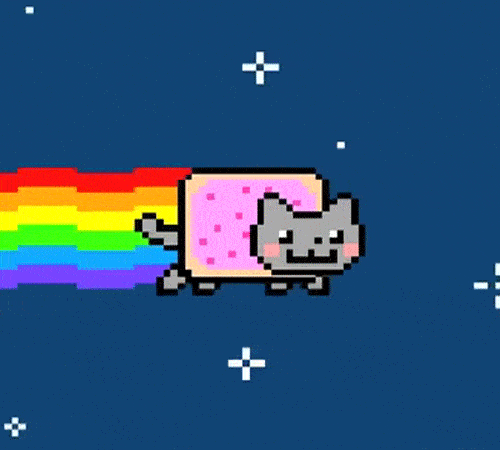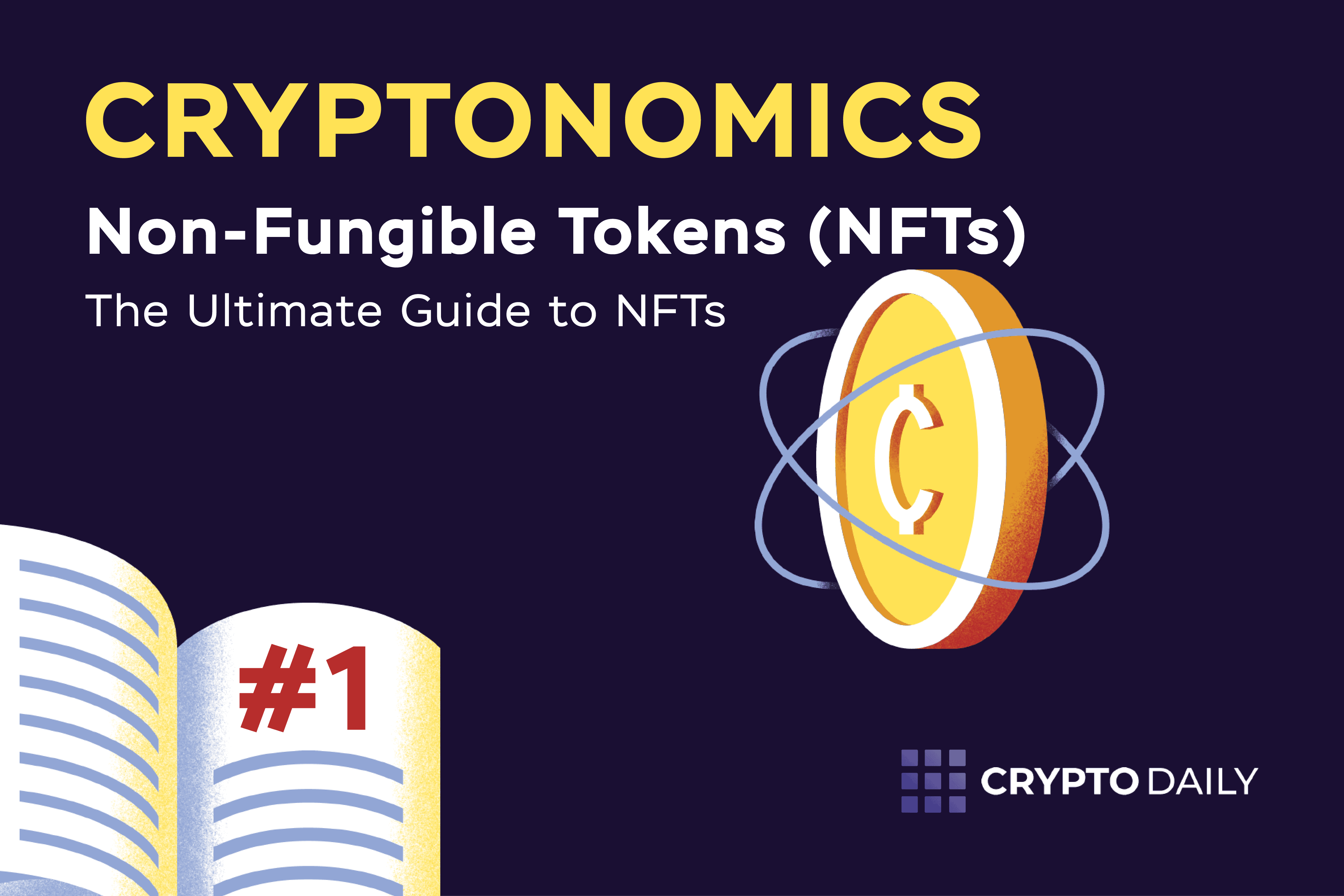Introduction
One of the trending terms on the crypto market recently, known as the next DeFi, is “NFTs”. NFTs are now sweeping the world of digital art and collectibles. The life of digital artists has changed significantly as a result of massive sales to new crypto audiences. Not just that, celebrities are also jumping on the board as they perceive NFTs as a new way to engage and interact with their fans.
In today’s article, we will explain everything about NFTs, including what NFTs are, how they work, what is the difference between NFTs and cryptocurrencies and what are they used for?
What is an NFT?
NFT, stands for non-fungible token, is a collectible digital asset that has value as a cryptocurrency as well as a piece of art or culture. NFTs are perceived as a value-holding investment in the same way that art is. However, unlike a standard coin such as Bitcoin or Ethereum, an NFT is unique and can’t be interchangeable (this explains for the word “non-fungible” in NFT).
For example, if you borrow my iPhone X to use for a time and then you lose it. To give me back the phone, you can go to an Apple store and buy another one. However, with non-fungible assets, it’s completely different. For example, if you owe me a Van Gogh’s Starry Night painting, which is a non-fungible asset and its value is justified by its scarcity. If you want to give me back the painting, you can’t just go to any art shop or pay me money, it must be the original one, painted by Van Gogh himself. If Bitcoin has 21 million coins with similar characteristics, each NFT is unique, even though they are developed on the same blockchain – the only similarity between an NFT and cryptocurrency.
Types of NFTs are various, but they can be in the form of a piece of digital art or a music video – anything unique that can be saved digitally and considered valuable. In essence, they are the same as any other physical collectibles, however, instead of getting an oil painting or a music CD, you will get a JPG file or a music file.
How NFTs work
NFTs are typically held on the Ethereum blockchain, so they are separate tokens with additional information saved in them. The additional information can be in the form of art, gifs, videos and sports highlights, music, virtual avatars and so on. Because NFTs have value, they may be purchased and sold like other forms of art, and like real art, their worth is primarily determined by market and demand.
However, it doesn’t mean that there is one version of an NFT available to purchase on the market place. Copies of an NFT are still legitimate portions of the blockchain, just like art prints of an original are created, used, bought, and sold – but their value is not the same as the original. Furthermore, NFTs owners also receive exclusive ownership rights. NFTs’ unique data allow it to verify the ownership and transfer tokens between owners. The owner or the creator can also add specific information inside NFTs. For example, artists can include their signature in an NFT’s metadata.
What are NFTs used for?
Blockchain technology and NFTs give artists and content creators a one-of-a-kind opportunity to monetize their work. Artists, for example, no longer have to sell their artworks through galleries or auction houses. Instead, they can sell it as an NFT directly to customers, allowing them to keep a larger portion of the profits. Furthermore, artists can build a royalties program so that they can get a share of revenues when their work is sold to a new owner. This is a desirable feature for most artists since they do not earn further revenue after their initial sale. Not just that, there are lots of ways to make money with NFTs, aside from art. For example, companies such as Charmin and Taco Bell have auctioned off themed NFT art, which are NFTP (non-fungible toilet paper) and Taco Bell’s NFT art respectively, to raise funds for charity. Or Rainbow Cat, which is a GIF of a cat in the 2011 era with a pop-tart body, was sold by NyanCat for approximately $690,000. NBA Top Shot had also grossed more than $500 million in sales in late March. A NFT highlight of LeBron James was sold for more than $200,000.


Where can you buy NFTs?
If you are planning to own a NFT collection, you will need to:
Firstly, you have to create a digital wallet that lets you store NFTs and cryptocurrencies. Depending on what currencies your NFT provider supports, you’ll probably need to buy some cryptocurrency, such as Ether. Crypto can be purchased using a credit card of platforms such as Coinbase, Kraken, eToro, PayPal and Robinhood. After that, you’ll be able to transfer it from the exchange to your wallet. When you purchase crypto, keep fees in mind when researching for options since most exchanges charge at least a percentage of the transaction.
One you have your wallet set up and funded, you will be ready to purchase NFTs. Here are some of the popular NFT marketplaces:
- OpenSea.io: This P2P (peer-to-peer) marketplace claims to sell rare digital items and collectibles. To begin, you just simply create an account and start browsing for NFT collections. You can also be able to sort works by how much they sold to find new artists.
- Rarible: Just like OpenSea, Rarible is an open platform which allows artists to issue and sell NFTs. The platform’s RARI tokens allow users to vote on features such as fees and community regulations.
- Foundation: On this platform, artists must first obtain upvotes or an invitation from other creators to be able to submit their work. Because of the community’s exclusivity and high cost of membership (artists must also buy gas to mint NFTs), it’s highly likely to attract higher-quality work. Chris Torres, the founder of Nyan Cat, sold the NFT on this platform. It may also imply higher pricing, which isn’t necessarily a negative thing for artists and collectors looking to make profit if demand for NFTs remains unchanged or even rises in the future.
Although these sites and other platforms are home to hundreds of NFT producers and collectors, make sure that you research carefully before making purchases. There are some artists that have been defrauded by impersonators who listed and sold their work without the creator’s permission.
Furthermore, the verification methods for creators and NFT listings vary by platform, with some being more severe than others. For NFT listings, for example, OpenSea and Rarible do not require owner verification.
Why are NFTs controversial?
A lot of money is out there in the NFT market. However, you may have heard that NFTs are the subject of considerable debate, particularly in regards to their impact on the environment.
The production of NFTs necessitates a massive quantity of energy. So much so that many protestors are concerned about NFTs’ impact on the environment. According to CryptoArt.wtf, one artwork called ‘Coronavirus’ used an astonishing 192 kWh in its construction, which is equal to a European Union resident’s energy usage in 2 weeks. You may think it’s a very large piece of work, in fact, it’s just a simple GIF.
Is it possible for anyone to create an NFT?
Yes, technically, anyone can sell an NFT. Anyone may create an artwork, convert it to an NFT on the Blockchain (a process known as minting,’) and sell it on their preferred marketplace. You may also add a commission to the file that will pay you every time someone buys the artwork, including resales. The hidden costs may be exorbitant, with sites charging a ‘gas’ fee for each sale (the cost of the energy required to execute the transaction), as well as a fee for selling and purchasing. You must also account for conversion costs and pricing changes based on the time of day.
Final Word
NFTs have undoubtedly become a new you for the ultra-wealthy and there is real money to be gained if you can pull it off. NFTs offer digital art a whole new meaning, and the prices witnessed at auction suggest it’s a true part of the future of art and collectibles in general.



![MoonPay Review ([currentyear]): Fees, Pros & Cons, and Sign-Up Guide. 8 Moonpay Review Featured Image](https://coinwire.com/wp-content/uploads/2023/09/moonpay-review-featured-image-1024x683.jpg)
![The Complete Guide to Add Bitcoin to MetaMask Wallet ([currentyear]) 9 Add Bitcoin To Metamask Featured Image](https://coinwire.com/wp-content/uploads/2023/05/add-bitcoin-to-metamask-1024x683.jpg)
![Binance Futures Quiz Answers (Updated in [currentmonth] [currentyear]) 10 Binance Futures Quiz Answers Featured Image](https://coinwire.com/wp-content/uploads/2022/12/binance-futures-quiz-answers-1024x683.png)
![Buy Bitcoin with Apple Pay No Verification in [currentyear] 11 Buy Bitcoin With Apple Pay No Verification](https://coinwire.com/wp-content/uploads/2024/01/buy-bitcoin-with-apple-pay-no-verification-1024x683.jpg)
![How to Convert BEP20 to ERC20 Tokens Guide in [currentyear] 12 How To Convert Bep20 To Erc20 Token](https://coinwire.com/wp-content/uploads/2023/09/bep20-to-erc20-1024x683.jpg)